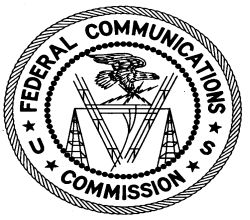What Caused The Fatal Air Angels Crash In Aurora?
By Karl Klockars in News on Oct 16, 2008 8:38PM
 Last night's fatal crash of an Air Angels helicopter flight in west suburban Aurora still has no apparent cause, but more information is coming out. The victims have been identified as William Mann of Chicago, Dell Waugh of Carmel, Indiana, and Ronald Battiato of Peotone; the infant patient has been identified as Kirstian Blockinger of Leland.
Last night's fatal crash of an Air Angels helicopter flight in west suburban Aurora still has no apparent cause, but more information is coming out. The victims have been identified as William Mann of Chicago, Dell Waugh of Carmel, Indiana, and Ronald Battiato of Peotone; the infant patient has been identified as Kirstian Blockinger of Leland.
A witness speaking to ABC-7 reports that he heard the engine of the helicopter sputtering, and another witness also reported seeing "an orange arc from the antenna and then...an orange fireball." During a press conference with the NTSB earlier today, they confirmed that after the crash the lights from the tower were not illuminated; whether or not they were beforehand hasn't been established. In addition, according to AP, the NTSB is saying that there was no distress call from the helicopter, and the conditions last night were clear.
FCC rules and regulationss on tower lighting, as well as more info from a former employee of WBIG Radio (who happens to be the author of this post) after the jump.
Taking pilot error and mechanical failure out of the equation for the time being, what are the rules for tower lights according to the FCC? In Section 17 of the FCC rules and regulations, it says this:
(a)(1) Shall make an observation of the antenna structure's lights at least once each 24 hours either visually or by observing an automatic properly maintained indicator designed to register any failure of such lights, to insure that all such lights are functioning properly as required
They also need to be illuminated from sunset to sunup, at least. In addition, any time that the lights are not illuminated, FCC Flight Service or the FAA has to be alerted. Full disclosure time: I am a former WBIG Radio employee, from about 2002 through 2005, and currently employed elsewhere in the radio industry. Tower lights are often verified twice a day, usually once in the morning and once at night. Those are then logged and initialed by the operator on duty and in many places, that kind of documentation is often no more than just checking off a section on a clipboard.
The physical studio of the radio station is just steps from from the tower itself - morning visual verification often took place during the drive to the station. The station usually closes for business at about 6pm - and if the sun isn't down at that time, it can be hard to verify that the lights are still operational. If there is no one on-site for evening programming or local sports broadcasts and the station is in automation (as is common among many small stations), it's not out of line to assume that sometimes it doesn't get done.
The coincidence of a fatal mechanical error taking place in such extreme proximity to a radio tower 740 feet in the air would be a real stretch, but it is entirely possible, and a full report on the crash isn't expected for months at the quickest. However, it's a safe bet that the FCC will be doing their own inspection and checking WBIG's paperwork much sooner than that.